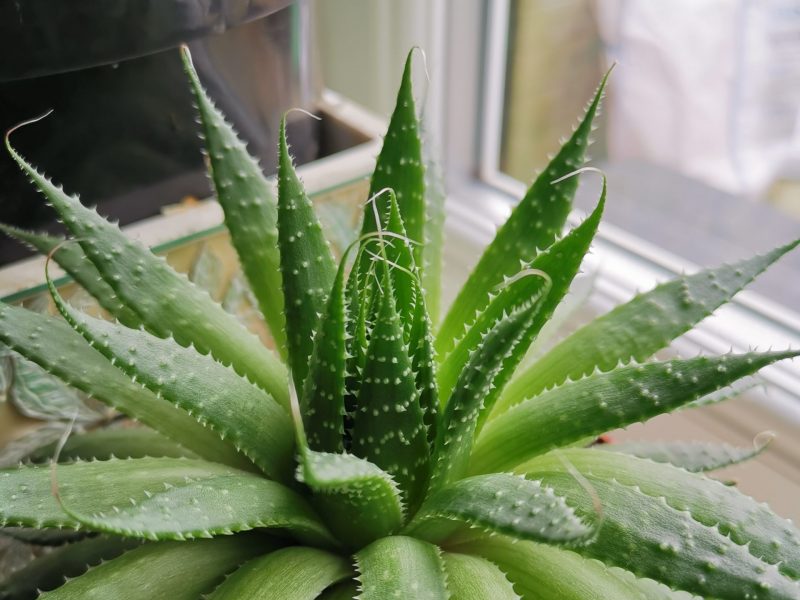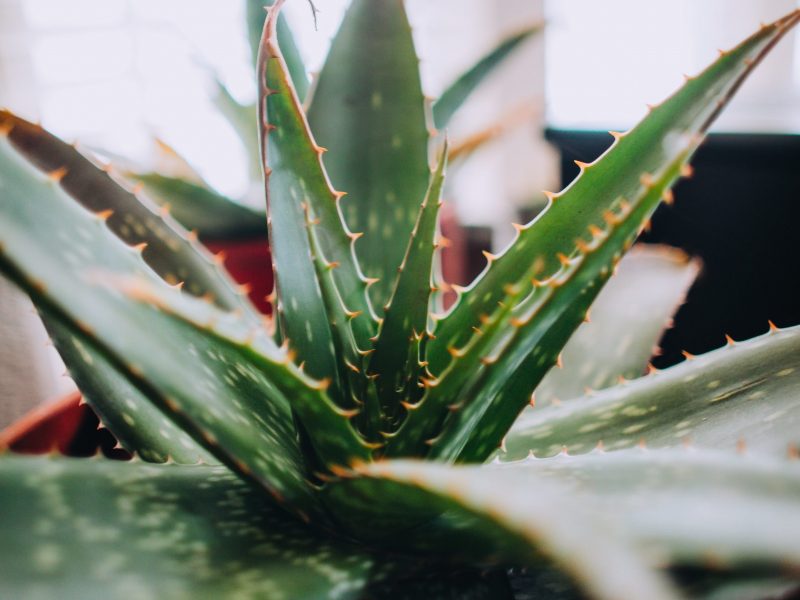
Aloe Veras are fairly hardy plants that can be really easy to care for. However, if you do start to notice that your Aloe Vera’s leaves are curling, this may be a symptom of incorrect care or environment. The main reasons why your Aloe Vera’s leaves are curling are: over-or underwatering, dry air, pest infection or a sudden change of environment.
In this article, we will go through each of the mentioned causes as well as going through how to diagnose the issue, treat it and prevent it from causing further leaves to curl up on your Aloe Vera plant.
Underwatering is the main cause of curling Aloe Vera leaves
Too little water is the most common reason why Aloe Vera plants start to curl their leaves. This is often surprising to plant parents because Aloe Vera plants are known for needing little water and thriving in dry soil. However, they do need some moisture to survive and thrive so long dry spells will start to cause some real issues.
Before underwatering causes dry crispy brown leaves, it will usually start off by showing itself as curling leaves. This is a mechanism that Aloe Vera plants (and many other plant types) use to reduce the loss of moisture.
There are several reasons for drought stress that can cause your aloe vera leaves to curl inwards:
Watering the aloe too lightly (Aloe Vera plants require an infrequent but generous soak).
Not watering frequently enough (although Aloe Vera plants are somewhat drought tolerant, they still require scheduled watering, especially during heatwaves and hot months).
Lower humidity can also increase transpiration from the leaves causing them to dry out and start curling.
Your plant is in water-repellent soil. (If the soil being used is peat-based it can dry off quickly to form a hard potting mix. This then repels water from the surface and it runs down the pot without actually reaching the roots.)
The best way to diagnose and confirm that underwatering is causing your Aloe Vera to start curling is to remove it from its pot and inspect the soil and root system. If you notice that the roots have turned dry and crispy then this indicates underwatering.
How to fix the issue and prevent further curling leaves on your Aloe Vera
Give your Aloe Vera a soak. This will ensure the root system takes up the water rather than it just running out of the bottom of the pot. We recommend soaking for about 5-10 minutes at first so that your plant has enough time to take in some water but it doesn’t leave the whole soil waterlogged.
Adjust your watering schedule moving forward so that you are watering more generously.
Monitor the environment to pick up on any fluctuations that might mean your plant is drying out quicker (low humidity, higher temperatures and more sunlight).
Check the environment for drafts and cold air
Outside of underwatering, there are a few other issues that can cause the leaves on your Aloe Vera to start curling. Cold temperatures and cold drafts are one of them. Whilst you might not notice them, cold streams of air coming in from the outside right by your plant can be very damaging in the long term.
Make sure that you draft-proof any windows/ doors that are close to your Aloe Vera (and other tropical or heat-loving houseplants) as well as move them away from any air conditioning vents as these can be quite damaging to your plants during summer.
Using a digital thermometer is an easy way to monitor the temperature in your home and they allow you to check for any cold drafts. They are a great investment for plant parents.
If your Aloe Vera is in quite a cool room, this can also increase the risk of overwatering and root rot. Your Aloe Vera won’t need as much water as the soil will take a lot longer to dry out in cooler temperatures. This can be the perfect place for root rot and leaf rot to occur so you want to be cutting back your watering frequency to prevent this.
A sudden change in environment can often cause curling leaves
Things like repotting, propagating or moving your plant to a new spot in your home can cause your Aloe Vera to get a little shocked and the leaves may start curling. It is nothing to worry about and it will just take some time for it to return to normal and for the leaves to naturally uncurl.
One thing to make sure of if you have moved your Aloe Vera to a new spot is that the conditions are the same, if not better than the one it was previously in. Your Aloe Vera will probably survive if the conditions are less suited to its requirements but it may just grow a little slower than before.
The best way to determine if the environment is right is by using a light meter, as well as a thermometer and humidity gauge.
Those are the most common reasons why Aloe Vera plants begin curling their leaves. We would always start with figuring out if underwatering is to blame as dehydration and drought stress is the most common cause. From there, check other factors such as temperature and humidity to see if there are any changes that might be stressing your Aloe Vera out.
If the only symptom is curling leaves, then it suggests that you have caught the issue fairly early which should mean treating the issue is easier. The longer you leave the problem to progress, the more difficult it will be to get your plant back on track. Make sure to keep a close eye on your Aloe Vera for the next few weeks after making any changes to the care and environment so that you’re sure the issue is resolving itself.
Check out our Aloe Vera care guide for more information on other common problems as well as general care tips to help your plant thrive!














